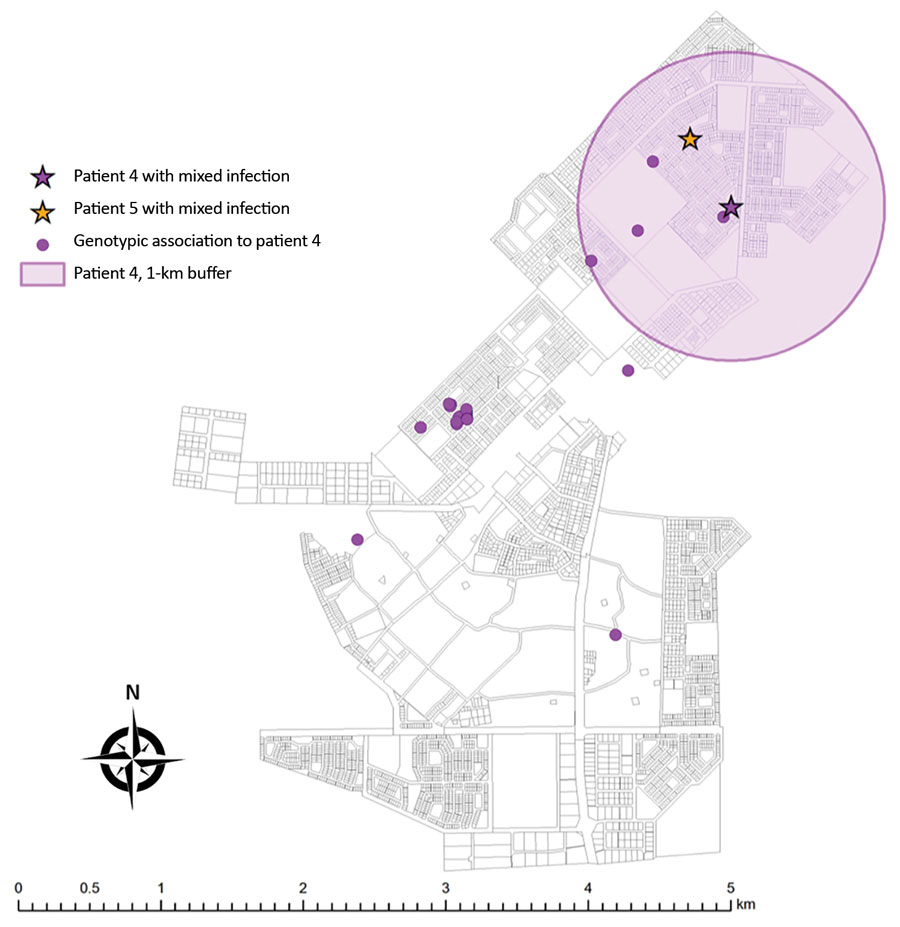Volume 26, Number 5—May 2020
Research
Possible Transmission Mechanisms of Mixed Mycobacterium tuberculosis Infection in High HIV Prevalence Country, Botswana
Figure 4

Figure 4. Potential spatial relationships (residence within 1 km of another patient) between mixed infection and other genotype-clustered cases, Ghanzi, Botswana, 2012–2016. Shown are locations of patients with mixed Mycobacterium tuberculosis infection and other genotype-clustered cases. Each color represents each genotype cluster. The 1-km radius blue-shaded area from each mixed infection patient shows the neighborhood boundary. Two patients with mixed infection were genotype-clustered and had a potential spatial relationship. (Their mycobacterial interspersed repetitive unit–variable-number tandem-repeat results were not exactly matched.)
1Current affiliation: Johns Hopkins University, Baltimore, Maryland, USA.
2These senior authors contributed equally to this article.